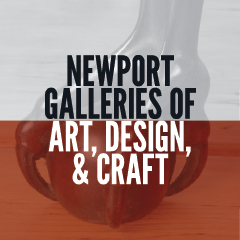
Newport Artistry,
Craftsmanship,
Industry — Past & Present
NRF and Newport Furniture
The Newport Furniture Industry
Take a closer look at the intricate details that are typical to Newport furniture design and craftsmanship.
Highlights from
the collection
Discover how ongoing research into Newport furniture leads to a more complex and complete understanding of culture, industry, and society in the colonial period—and how that impacts our own lives today.
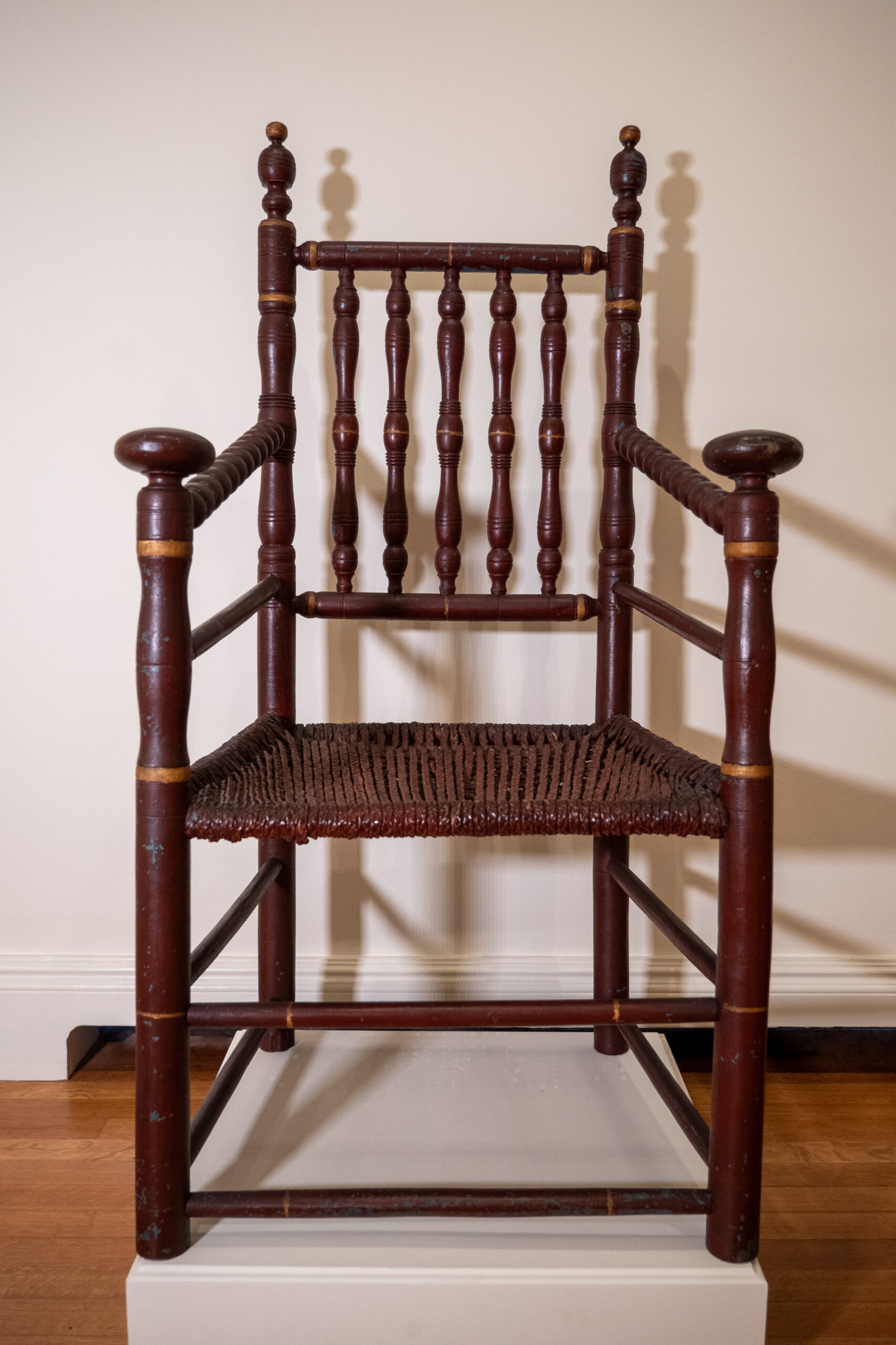
Carver Chair
- Armchair Chair, ca.1680
- Unknown maker and unknown weaver
- Maple, ash, cornhusk seat
This chair was once thought to be a 19th century reproduction of a “Pilgrim”, or early American, style, chair. The paint color made it appear it was from the Victorian period (or mid-19th century) and there was very little wear to the arms of the chair, making it seem unlikely to be over 3 centuries years old.
Conservation work has revealed many layers of history, that date back to as early as 1680—and points to the craftspeople involved in its creation.
The seat of this chair is made out of woven cornhusks and may have been made by a local Native American weaver (likely from the Wampanoag or Narragansett tribes).
Today, the chair displays its many layers of history: from the craft of weaving the seat (likely woven by a Rhode Island Indigenous woman), the early (but not original) layer of blue paint the reflects the design taste of the early 1800s, to the ca. 1850 dark red and gold paint visible today.
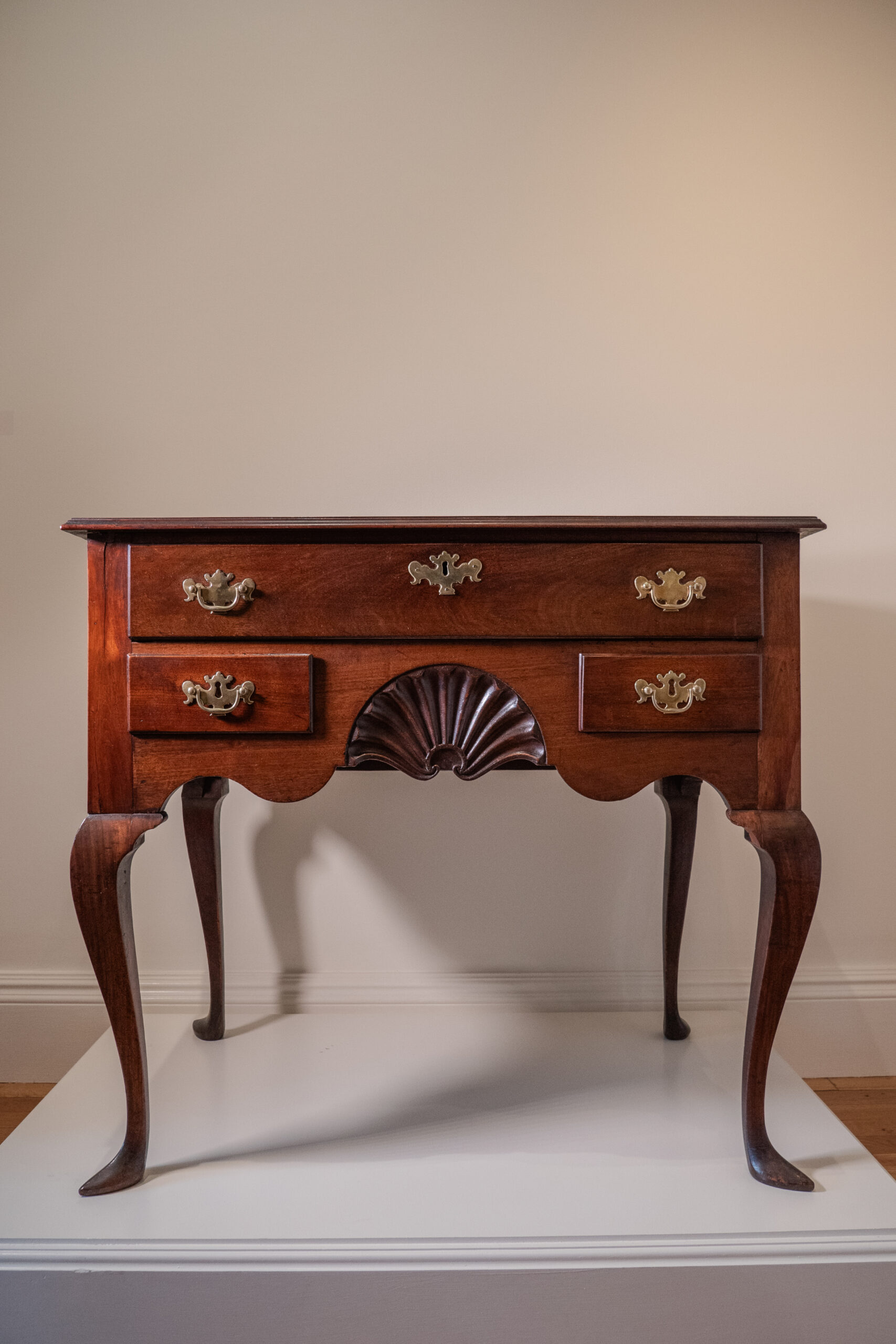
"Joiner D" Dressing Table
- Dressing Table, ca. 1750
- Maker “Joiner D,” active 1720-1760
- Made in Newport, RI
- Mahogany, pine, yellow poplar, brass
There are still discoveries to be made! “Joiner D” is a yet-unidentified maker of colonial Newport furniture. The “D” inscription found in this piece is also found in several other pieces of furniture made in Newport at this time.
This is one of the earliest items added to the NRF’s collection of Newport furniture; Doris Duke purchased this dressing table in 1970.
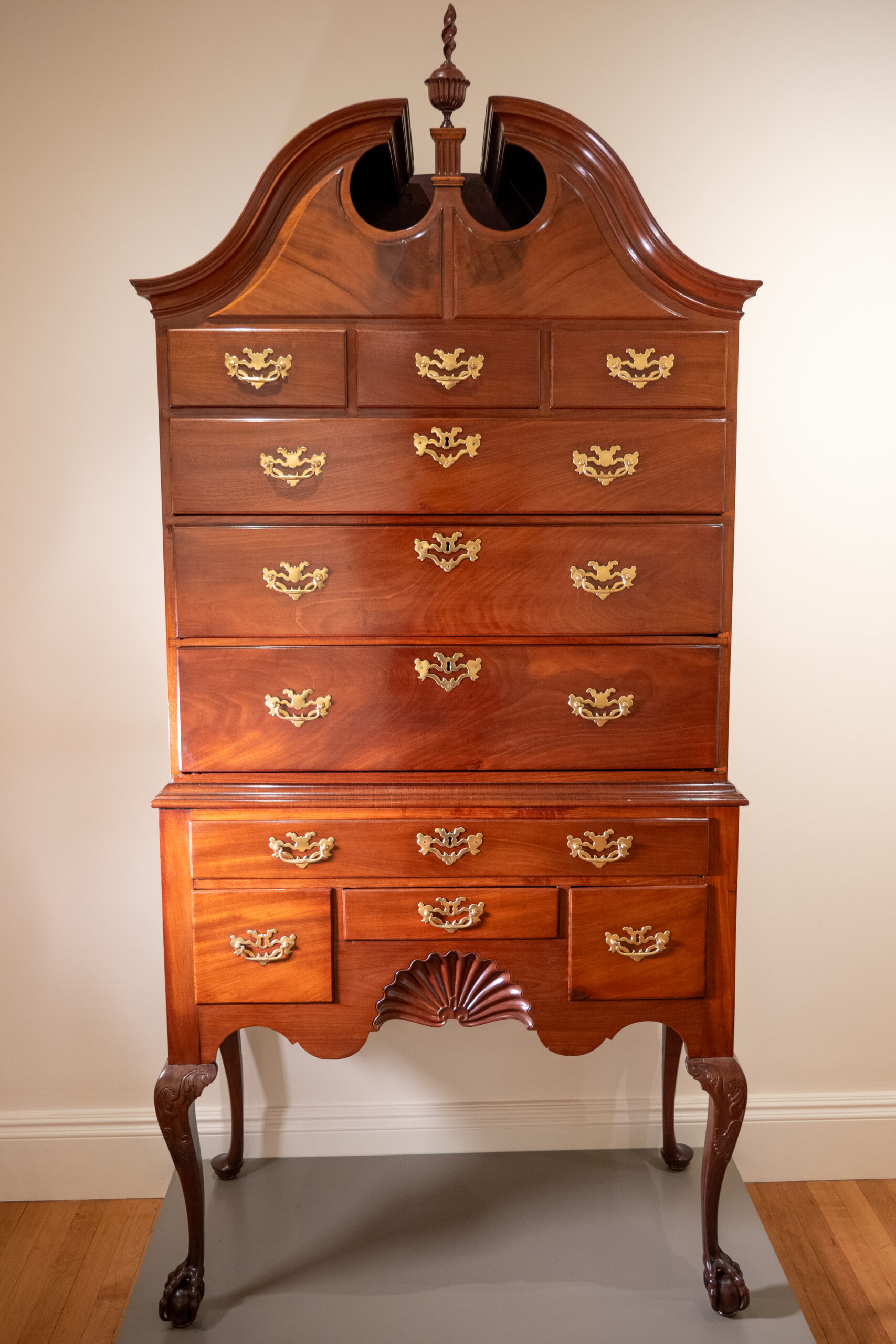
Baker High Chest
- High Chest, ca.1760
- Workshop of Benjamin Baker (1734/35-1822)
- Made in Newport, RI
- Mahagony, cedrela odorata, brass
This high chest is a spectacular example of Newport furniture and features the inscription of Benjamin Baker on the back of the piece
Benjamin Baker was active as a very prolific chair maker in Newport from 1760, and also made clock cases, tables and case furniture that was produced primarily for export to the coastal trade. This piece may originally have been designed for export: a recent conservation project revealed that the secondary wood is cedrela odorata—an unusual choice for Newport furniture.
Another special feature is the intaglio (incised) carved petal and leaf motif on the knees; a decorative detail found on Newport high chests and tea tables.
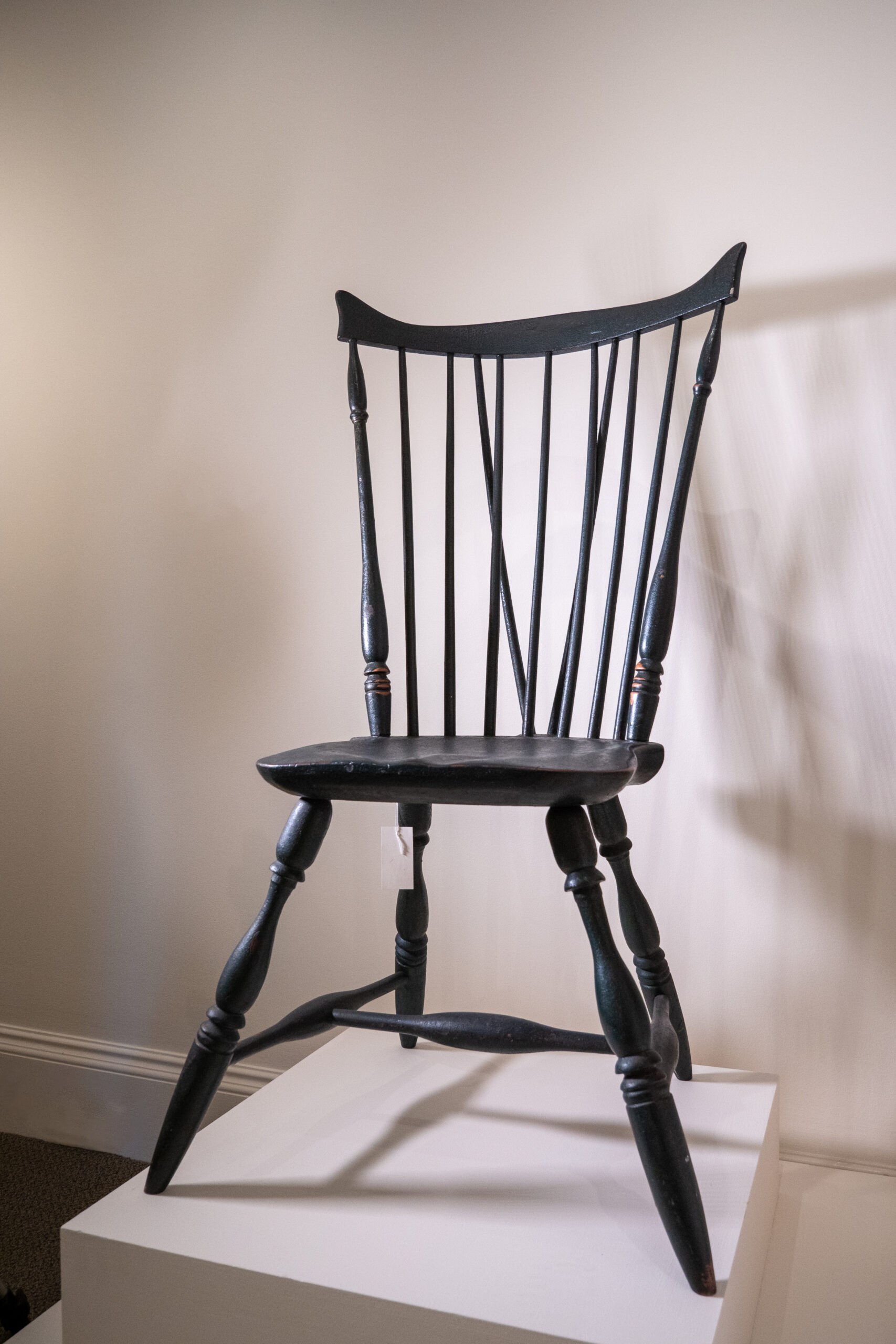
Fan-Back Windsor Chair
- Windsor Chair, ca. 1780-1790
- Unknown Maker
- Pine
- Made in Newport, RI
This is an excellent example of a Newport Windsor chair. So-called Windsor chairs were some of the most popular and prolific types of chairs made and used in colonial North America. Newport makers also produced more chairs for export to other colonies than any other type of furniture.
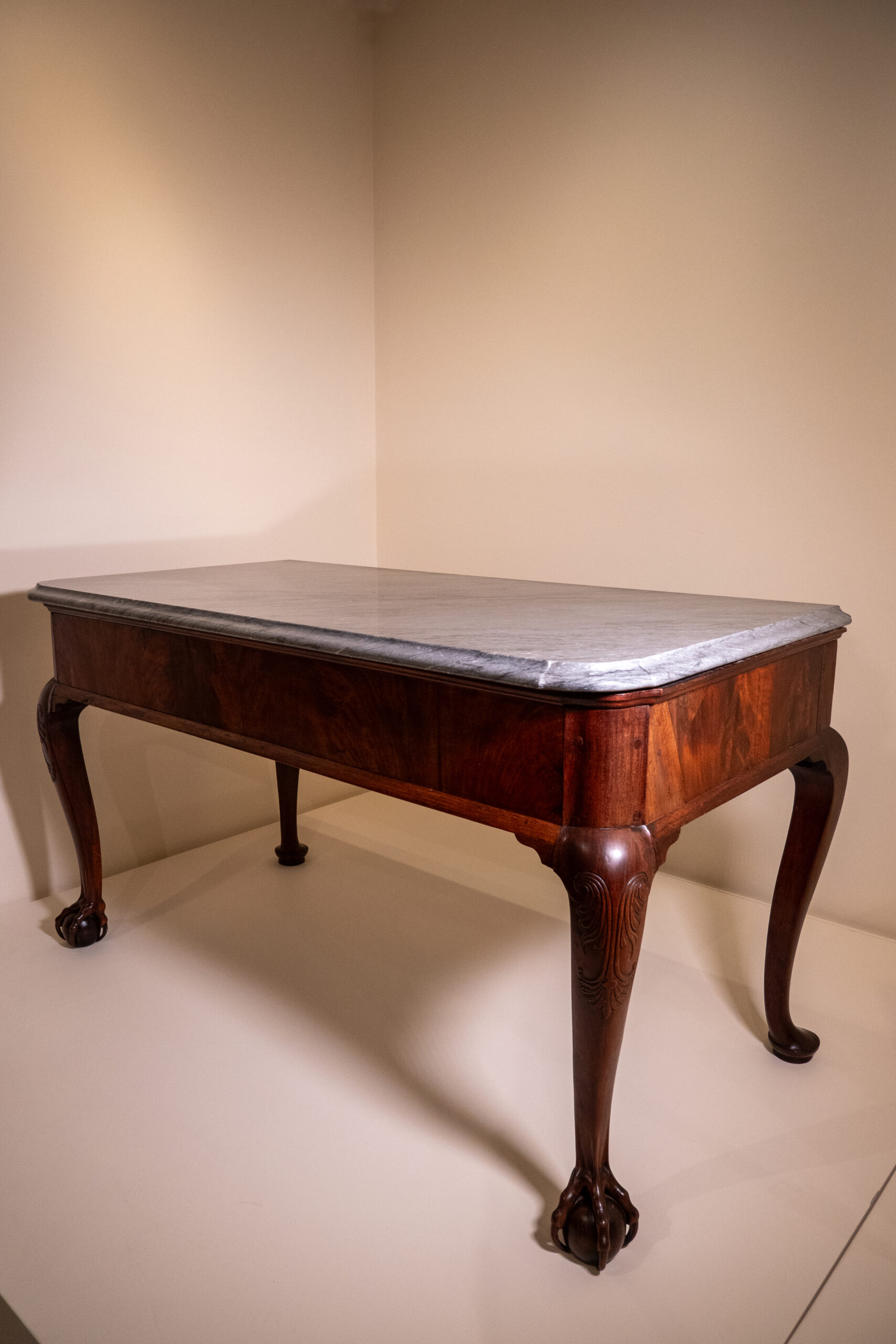
Slab Table
- Slab Table
- Workshop of John Goddard (1723-1785)
- Made in Newport, RI
- Mahogany, maple, marble
The table includes ball-and-claw feet distinctive of John Goodard’s handiwork—including undercut talons and realistic-looking halluxes.
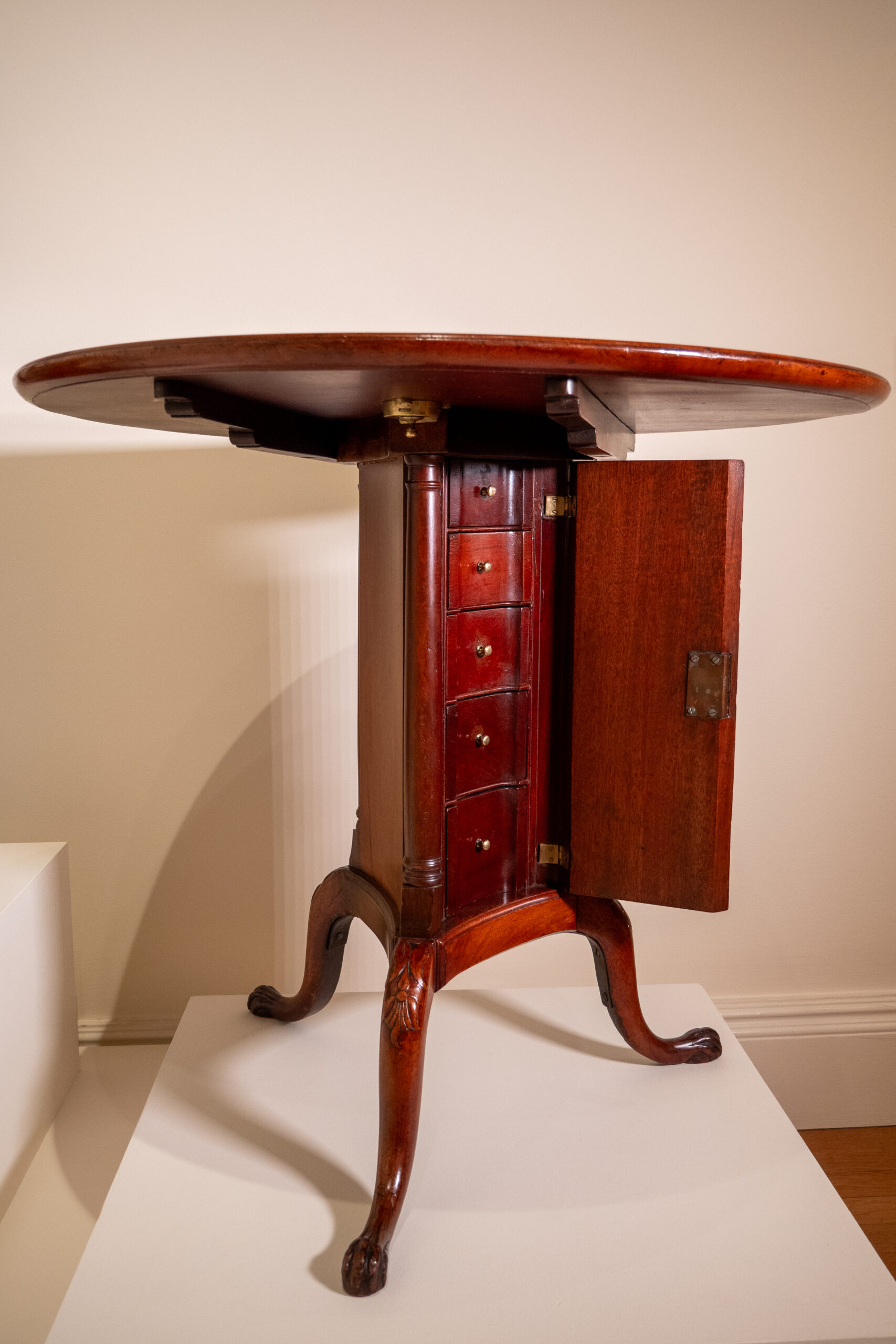
Tilt-top Tea table
- Tea Table, ca.1770
- Unknown maker
- Likely made in Newport, RI
- Mahogany, brass
This table has a tilt-top and is positioned as it would have been when it was not in use—with the top tilted-up so that it can easily go against the wall to make more space in a formal room, but the gleaming mahogany surface is still on display and can be easily admired.
These types of tables were sometimes called “fly tables”—Newport cabinetmaker Job Townsend, for example, referred to them that way in his account book. They were also referred to as “pillar and claw,” “claw tables,” and—some onomatopoeia—“snap tables,” for the satisfying sound they make when the top clicks into place.
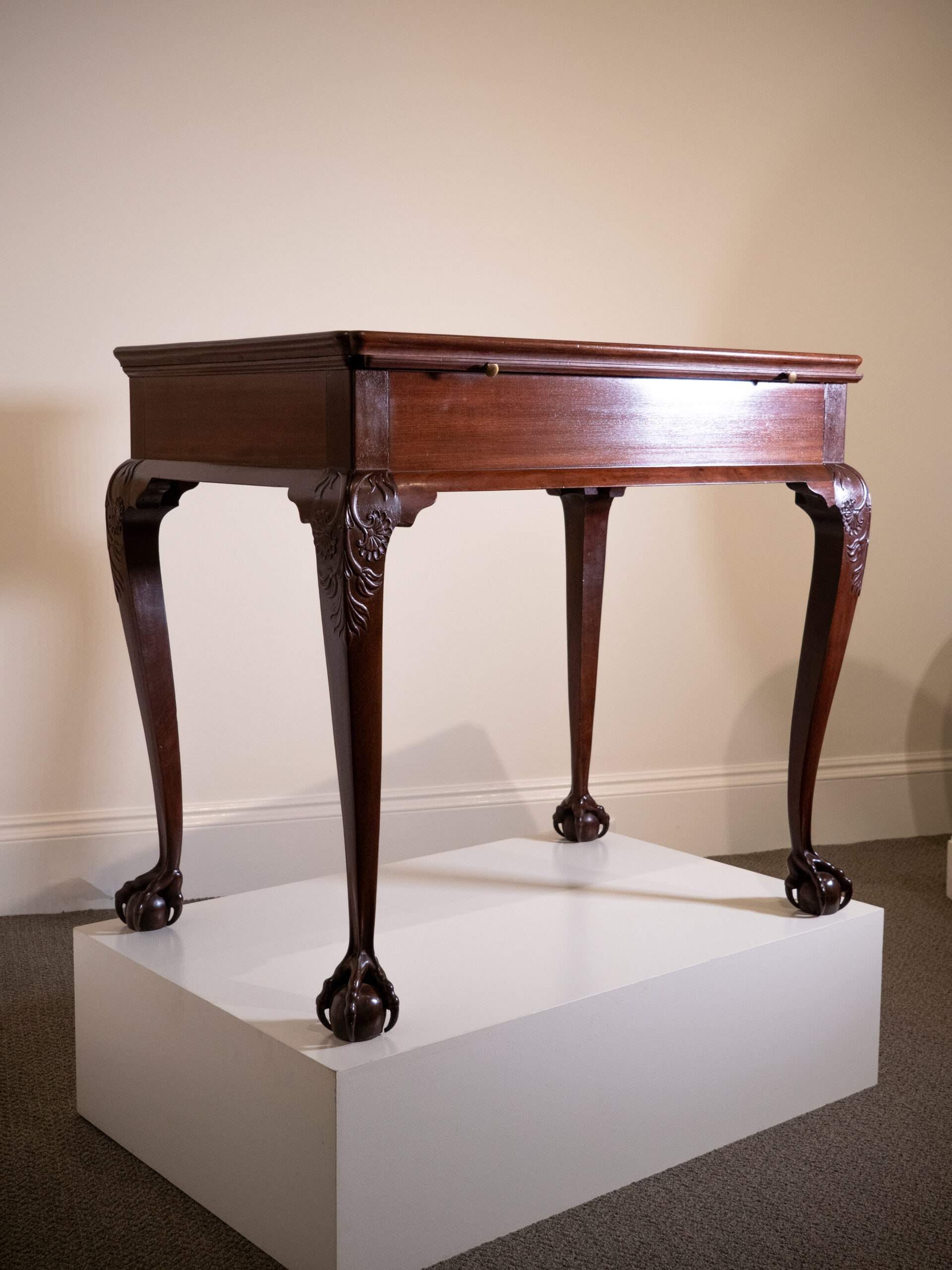
Tea Table
- Tea Table, ca. 1760
- Unknown maker
- Likely made in Newport, RI
- Mahogany
This table was made in a Newport workshop, and seems influenced by the work of the Goddard workshop (especially in the execution of the highly detailed ball-and-claw feet).
The detailed carving, the decorative ornamentation, and the use of mahogany all point to the fact that this was a high-end table, made for a socially elite clientele.
This tea table was altered to include additional surface area, to accommodate more items on the table. This also points to the fact that as time went on, the ritual of tea-taking involved more and more items—so the family who owned this table, needed more space.
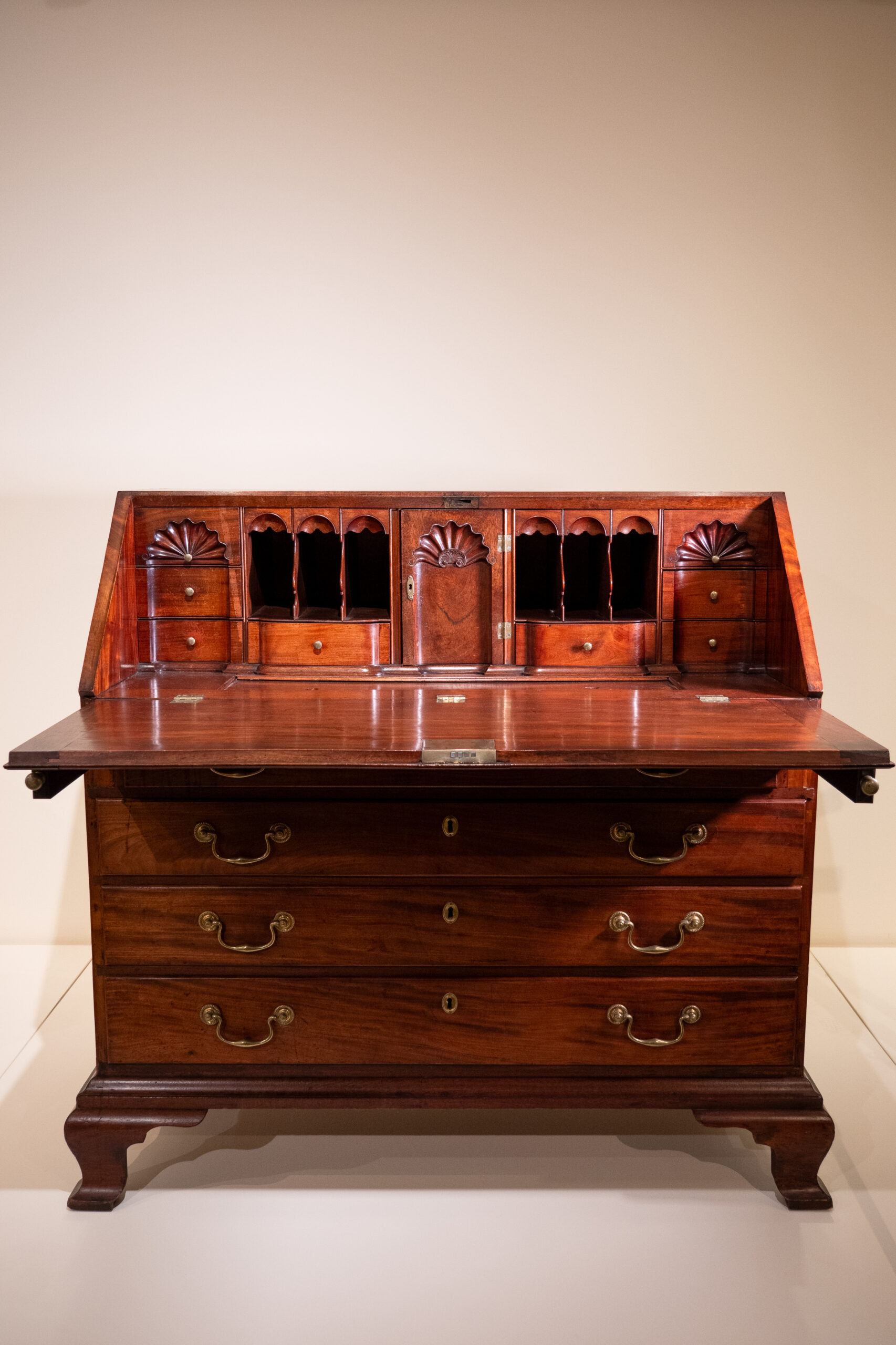
Slant-front Desk
- Slant-front Desk, ca. 1790
- Workshop of John Townsend (1732-1809)
- Made in Newport, RI
- Mahogany, cherry, chestnut, yellow poplar,
- maple, brass
The size of the piece (too large for export) and other details in the drawers points to the fact that this was likely John Townsend’s personal desk.
This was one of pieces Townsend bequeathed to his daughter, Mary Townsend Brinley (1759-1856). Her care and keeping of these objects helped ensure that later collectors, including Doris Duke, were able to acquire them and make them accessible to the public.
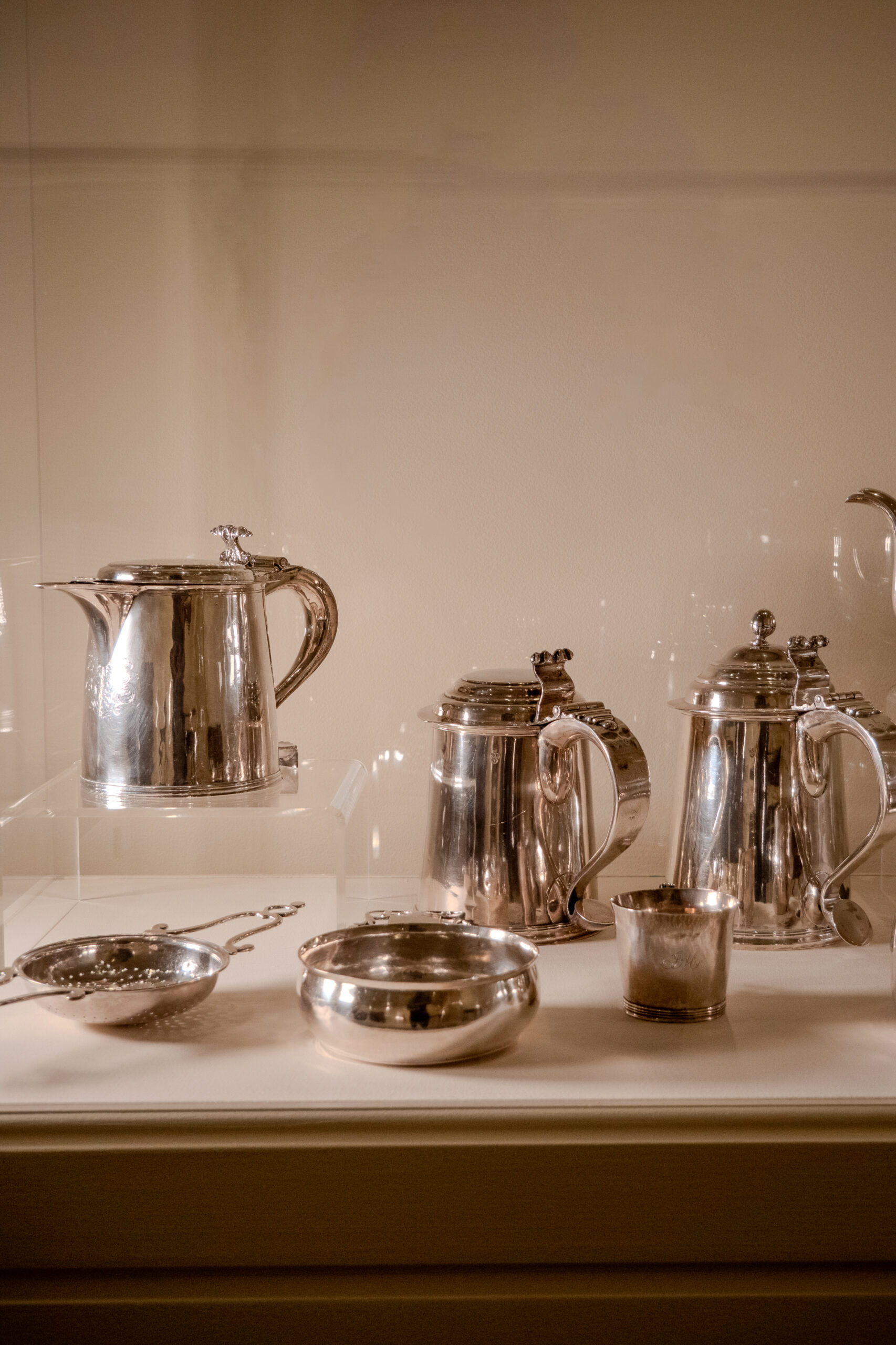
Silver
Silver had a vital role in the colonial system—it connected people from across European, Asian, and African empires to the Americas. For those living in the British colonies of North America—the colonists, Indigenous people, enslaved and free Africans, men and women, craftspeople, traders, consumers, apprentices—silver had a complex and intimate place in their lives. Silver was present everywhere: in small bullion coins used for transactions, in threads woven into textiles, in tools used for production, in chalices used for ritual in places of worship, and in decorative objects of art used for commemoration and display in homes.
Doris Duke began collecting silver objects with connections to 18th-century Newport at the same time she was acquiring works of furniture for what would become the core of NRF’s collection of Newport furniture.
